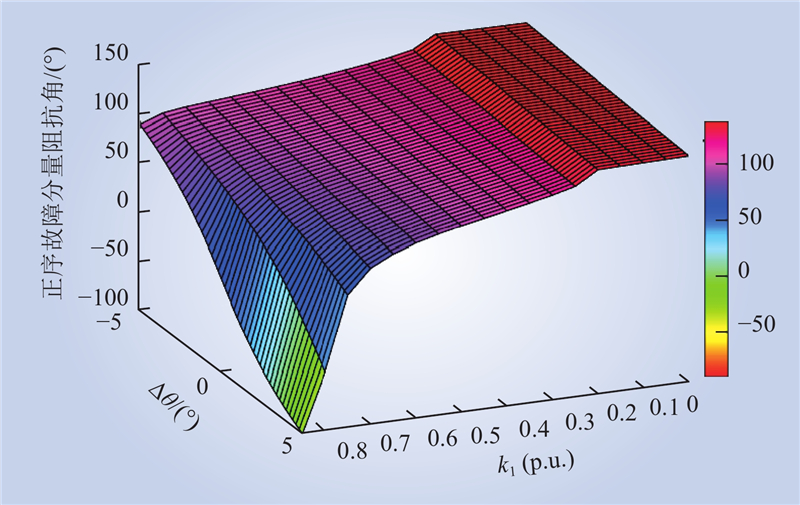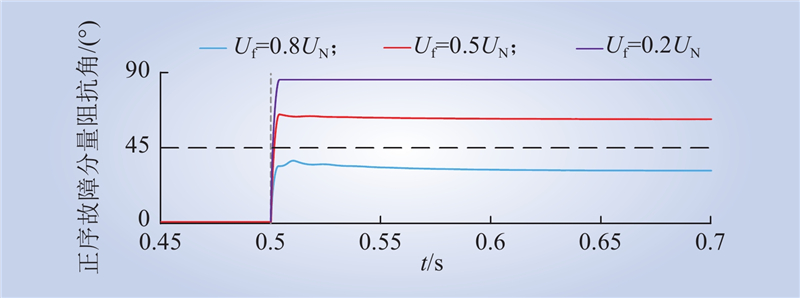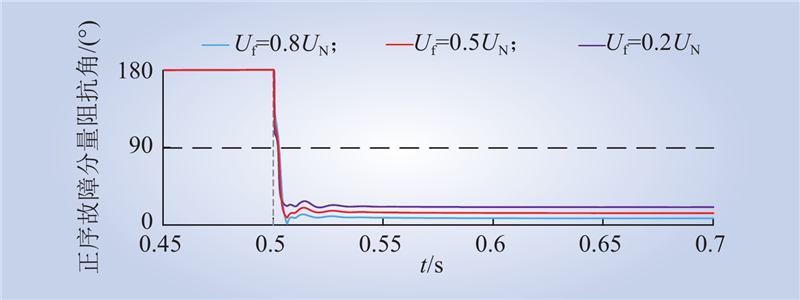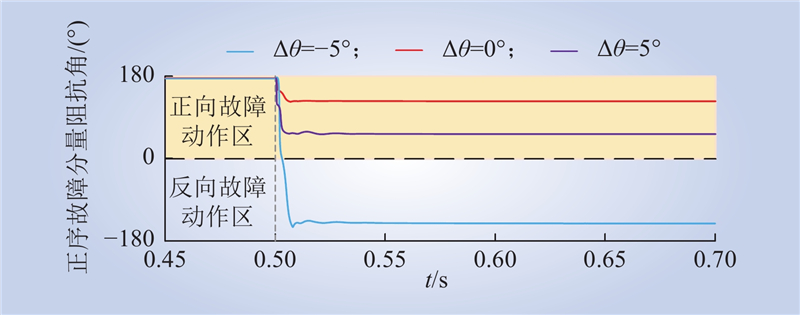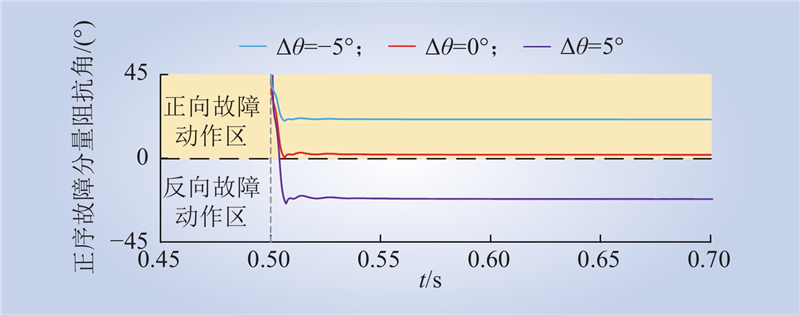| 1 |
呼斯乐, 王渊, 于源, 等. 考虑风光不确定性与灵活性指标的园区综合能源系统最优调度[J]. 内蒙古电力技术, 2024, 42 (1): 15- 21.
|
|
HU Sile, WANG Yuan, YU Yuan, et al. Optimal dispatching of integrated energy system in industrial parks considering wind and solar uncertainty and flexibility indicators[J]. Inner Mongolia Electric Power, 2024, 42 (1): 15- 21.
|
| 2 |
田刚领, 武鸿鑫, 李娟, 等. 风电场多功能储能电站功率分配策略[J]. 中国电力, 2024, 57 (9): 247- 256.
|
|
TIAN Gangling, WU Hongxin, LI Juan, et al. Power distribution strategy of multi-functional energy storage power station in wind farm[J]. Electric Power, 2024, 57 (9): 247- 256.
|
| 3 |
刘振, 吴秀山, 周昭民, 等. 考虑出力平滑的风光储协同规划方法[J]. 智慧电力, 2024, 52 (9): 25- 32, 79.
|
|
LIU Zhen, WU Xiushan, ZHOU Zhaomin, et al. Cooperative planning method for solar-wind-storage considering output smoothing[J]. Smart Power, 2024, 52 (9): 25- 32, 79.
|
| 4 |
展浚哲, 史泽中, 汪涛. 多元电化学储能技术综述[J]. 电力科技与环保, 2024, 40 (3): 237- 249.
|
|
ZHAN Junzhe, SHI Zezhong, WANG Tao. Overview of multivariate electrochemical energy storage technologies[J]. Electric Power Technology and Environmental Protection, 2024, 40 (3): 237- 249.
|
| 5 |
赵丽颖, 张灵芝, 郑焕坤, 等. 考虑光伏和能量调度装置的电气化铁路储能运行调度[J]. 东北电力大学学报, 2024, 44 (2): 51- 57.
|
|
ZHAO Liying, ZHANG Lingzhi, ZHENG Huankun, et al. Energy storage operation scheduling of electrified railway considering photovoltaic and energy dispatching device[J]. Journal of Northeast Electric Power University, 2024, 44 (2): 51- 57.
|
| 6 |
谢小荣, 马宁嘉, 刘威, 等. 新型电力系统中储能应用功能的综述与展望[J]. 中国电机工程学报, 2023, 43 (1): 158- 169.
|
|
XIE Xiaorong, MA Ningjia, LIU Wei, et al. Functions of energy storage in renewable energy dominated power systems: review and prospect[J]. Proceedings of the CSEE, 2023, 43 (1): 158- 169.
|
| 7 |
刘幸蔚, 李永丽. 逆变电源T接电网后对纵差保护的影响及准入容量分析[J]. 电网技术, 2016, 40 (5): 1595- 1600.
|
|
LIU Xingwei, LI Yongli. Effect of IIDG connected to grid as a teed line on longitudinal differential protection and maximum penetration capacity[J]. Power System Technology, 2016, 40 (5): 1595- 1600.
|
| 8 |
WEI W, ZHANG L M, GAO B T, et al. Frequency inconsistency in DFIG-based wind farm during outgoing transmission line faults and its effect on longitudinal differential protection[C]//The 4th Annual IEEE International Conference on Cyber Technology in Automation, Control and Intelligent. Hong Kong, China. IEEE, 2014: 25–30.
|
| 9 |
张家琪, 刘朋印, 谢小荣, 等. 适用于故障特性分析的锂离子电池储能电磁暂态建模方法[J]. 电力系统自动化, 2023, 47 (7): 166- 173.
|
|
ZHANG Jiaqi, LIU Pengyin, XIE Xiaorong, et al. Electromagnetic transient modeling method of lithium-ion battery energy storage system for fault characteristic analysis[J]. Automation of Electric Power Systems, 2023, 47 (7): 166- 173.
|
| 10 |
李彦宾, 贾科, 毕天姝, 等. 逆变型电源对故障分量方向元件的影响机理研究[J]. 电网技术, 2017, 41 (10): 3230- 3236.
|
|
LI Yanbin, JIA Ke, BI Tianshu, et al. Influence mechanism of inverter-interfaced renewable energy generators on fault component based directional relay[J]. Power System Technology, 2017, 41 (10): 3230- 3236.
|
| 11 |
贾科, 顾晨杰, 毕天姝, 等. 大型光伏电站汇集系统的故障特性及其线路保护[J]. 电工技术学报, 2017, 32 (9): 189- 198.
|
|
JIA Ke, GU Chenjie, BI Tianshu, et al. Fault characteristics and line protection within the collection system of a large-scale photovoltaic power plant[J]. Transactions of China Electrotechnical Society, 2017, 32 (9): 189- 198.
|
| 12 |
郑涛, 邹芃蓥, 王子鸣. 计及锁相环动态响应特性的光伏并网系统故障电流解析计算[J]. 电网技术, 2022, 46 (12): 4656- 4667.
|
|
ZHENG Tao, ZOU Pengying, WANG Ziming. Fault current analysis of photovoltaic grid-connected system considering dynamic response characteristics of PLL[J]. Power System Technology, 2022, 46 (12): 4656- 4667.
|
| 13 |
徐涛, 徐习东. 大容量储能系统的保护策略研究[J]. 电力系统保护与控制, 2013, 41 (8): 16- 22.
|
|
XU Tao, XU Xidong. Research on protection strategy of large-scale energy storage system[J]. Power System Protection and Control, 2013, 41 (8): 16- 22.
|
| 14 |
SALEH S A, RICHARD C, ST ONGE X F, et al. Comparing the performance of protection coordination and digital modular protection for grid-connected battery storage systems[J]. IEEE Transactions on Industry Applications, 2019, 55 (3): 2440- 2454.
DOI
|
| 15 |
国家市场监督管理总局, 国家标准化管理委员会. 电化学储能系统接入电网技术规定: GB/T 36547—2018[S]. 北京: 中国标准出版社, 2018.
|
| 16 |
周姝灿, 卢洵, 刘新苗, 等. 大容量锂电池储能电站的等值仿真方法[J]. 南方电网技术, 2022, 16 (4): 30- 38.
|
|
ZHOU Shucan, LU Xun, LIU Xinmiao, et al. Equivalent simulation method for large capacity lithium battery energy storage power station[J]. Southern Power System Technology, 2022, 16 (4): 30- 38.
|
| 17 |
BAK Y, LEE J S, LEE K B. A low voltage ride through control strategy for energy storage systems[C]//2016 IEEE Energy Conversion Congress and Exposition (ECCE). Milwaukee, WI, USA. IEEE, 2016: 1-6.
|
| 18 |
王晨清, 宋国兵, 刘凯, 等. 突变量保护对风电接入系统的适应性分析[J]. 中国电机工程学报, 2014, 34 (31): 5485- 5492.
|
|
WANG Chenqing, SONG Guobing, LIU Kai, et al. Adaptability analysis of fault component protection of power systems with wind farms[J]. Proceedings of the CSEE, 2014, 34 (31): 5485- 5492.
|
| 19 |
文明浩, 陈玉, 王玉玺, 等. 逆变型新能源场站送出线时域方向元件[J]. 电力系统自动化, 2024, 48 (16): 184- 191.
|
|
WEN Minghao, CHEN Yu, WANG Yuxi, et al. Time-domain directional components for transmission lines of inverter-interfaced renewable energy plant[J]. Automation of Electric Power Systems, 2024, 48 (16): 184- 191.
|
| 20 |
刘玮, 赖清华, 刘慧媛, 等. 适用于逆变型电源接入的故障方向判别新方法[J]. 电力自动化设备, 2020, 40 (1): 205- 211.
|
|
LIU Wei, LAI Qinghua, LIU Huiyuan, et al. Novel method of fault direction identification for inverter-interfaced power supply access[J]. Electric Power Automation Equipment, 2020, 40 (1): 205- 211.
|
| 21 |
罗美玲, 马英, 黄伟兵, 等. 计及电压幅值检测延时及相位跳变的IIDG故障电流解析计算[J]. 中国电力, 2024, 57 (2): 72- 81.
|
|
LUO Meiling, MA Ying, HUANG Weibing, et al. IIDG fault current analysis and calculation considering voltage amplitude detection delay and phase jump[J]. Electric Power, 2024, 57 (2): 72- 81.
|
| 22 |
许冠军, 梁营玉, 查雯婷, 等. 方向元件在光伏电站送出线路中的适应性分析[J]. 电网技术, 2019, 43 (5): 1632- 1639.
|
|
XU Guanjun, LIANG Yingyu, ZHA Wenting, et al. Adaptability analysis of directional relay for transmission line out-sending from photovoltaic power plant[J]. Power System Technology, 2019, 43 (5): 1632- 1639.
|
| 23 |
黄涛, 陆于平, 凌启程, 等. 适应于双馈风电场的改进故障序分量选相方法[J]. 电力自动化设备, 2016, 36 (4): 123- 128.
|
|
HUANG Tao, LU Yuping, LING Qicheng, et al. Improved fault-sequence component phase selector applied to DFIG-based wind farm[J]. Electric Power Automation Equipment, 2016, 36 (4): 123- 128.
|
| 24 |
王文博, 李斌, 何佳伟, 等. MMC接入的交流侧线路故障特征及故障分量方向元件的动作特性[J]. 电力自动化设备, 2023, 43 (10): 103- 111.
|
|
WANG Wenbo, LI Bin, HE Jiawei, et al. Fault characteristics of AC line connected to MMC and operating characteristics of fault component based directional relayings[J]. Electric Power Automation Equipment, 2023, 43 (10): 103- 111.
|
| 25 |
刘洋, 王聪颖, 夏德明, 等. 电网故障导致大面积风电低电压穿越对电网频率的影响分析及措施[J]. 电网技术, 2021, 45 (9): 3505- 3514.
|
|
LIU Yang, WANG Congying, XIA Deming, et al. Influence of large area wind power low voltage ride-through on power grid frequency caused by power grid faults[J]. Power System Technology, 2021, 45 (9): 3505- 3514.
|
| 26 |
花赟玥, 吴琛, 黄伟, 等. 考虑风电低电压穿越过程的频率最低点量化及其提升方法[J]. 电力系统自动化, 2023, 47 (1): 126- 134.
|
|
HUA Yunyue, WU Chen, HUANG Wei, et al. Quantification and enhancement method for frequency nadir considering low voltage ride-through process of wind power[J]. Automation of Electric Power Systems, 2023, 47 (1): 126- 134.
|
| 27 |
焦彦军, 梁宵, 蒋晨阳. 计及LVRT控制策略的光伏电站并网配电网故障分析方法[J]. 电力系统自动化, 2016, 40 (20): 92- 99.
|
|
JIAO Yanjun, LIANG Xiao, JIANG Chenyang. Failure analysis method in distribution network considering LVRT control strategy of grid-connected photovoltaic station[J]. Automation of Electric Power Systems, 2016, 40 (20): 92- 99.
|
| 28 |
何安然, 侯凯, 王小红, 等. 不对称条件下的储能虚拟同步发电机低电压穿越控制技术[J]. 电力系统自动化, 2018, 42 (10): 122- 127, 156.
|
|
HE Anran, HOU Kai, WANG Xiaohong, et al. A low voltage ride through control technique for energy storage virtual synchronous generator under asymmetric condition[J]. Automation of Electric Power Systems, 2018, 42 (10): 122- 127, 156.
|
| 29 |
张云飞, 赵晋斌, 周鸣倢, 等. 弱电网下自适应同步旋转坐标系锁相环鲁棒性分析及研究[J]. 中国电机工程学报, 2020, 40 (7): 2234- 2243, 2402.
|
|
ZHANG Yunfei, ZHAO Jinbin, ZHOU Mingjie, et al. Robustness analysis and research of adaptive synchronous-reference-frame phase-locked loop under weak grid[J]. Proceedings of the CSEE, 2020, 40 (7): 2234- 2243, 2402.
|
| 30 |
徐潜, 王彤, 王增平. 计及锁相环和电流内环暂态过程的逆变型电源故障电流解析方法[J]. 电网技术, 2024, 48 (6): 2603- 2612.
|
|
XU Qian, WANG Tong, WANG Zengping. Fault current analysis method of inverter-interfaced renewable energy sources with PLL and current inner loop transient processes[J]. Power System Technology, 2024, 48 (6): 2603- 2612.
|
| 31 |
霍启迪, 唐晓骏, 马世英, 等. 不对称短路故障下电池储能影响交流系统短路电流机理及算法[J]. 电力自动化设备, 2022, 42 (3): 153- 160.
|
|
HUO Qidi, TANG Xiaojun, MA Shiying, et al. Mechanism and algorithm of short circuit current in AC system affected by BESS under asymmetric short circuit faults[J]. Electric Power Automation Equipment, 2022, 42 (3): 153- 160.
|
| 32 |
HE L L, SHUAI Z K, CHU X, et al. Waveform difference feature-based protection scheme for islanded microgrids[J]. IEEE Transactions on Smart Grid, 2021, 12 (3): 1939- 1952.
DOI
|



